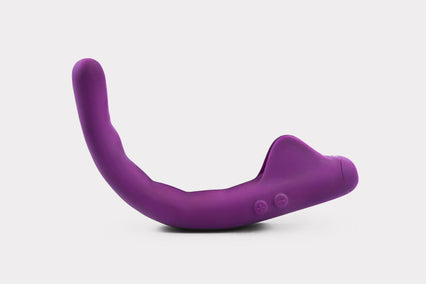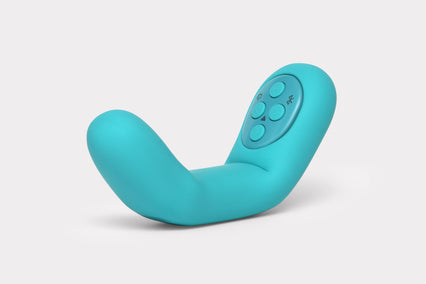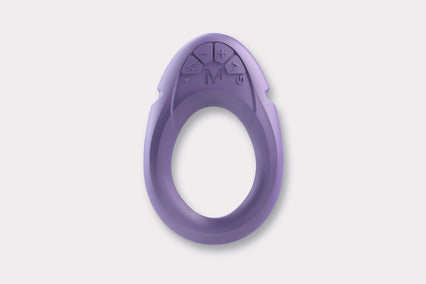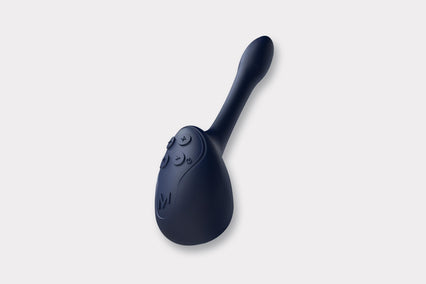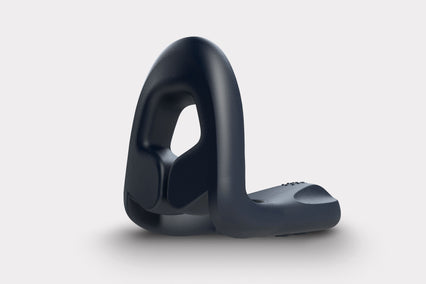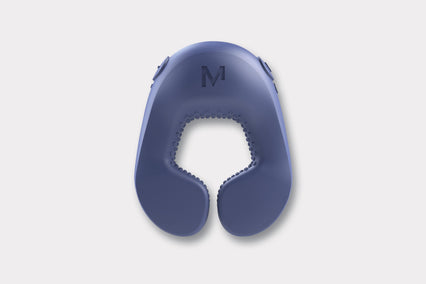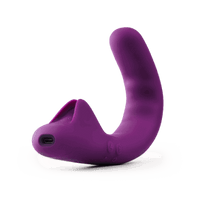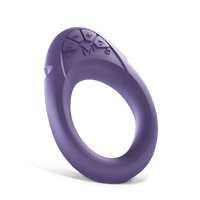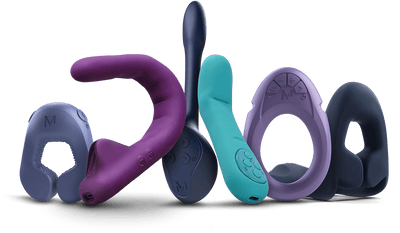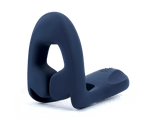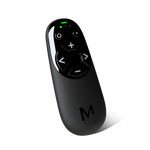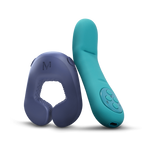Erectile dysfunction can be a distressing condition affecting the quality of life of many individuals. Fortunately, medical advancements have introduced a promising treatment option known as erectile dysfunction shockwave therapy. This innovative approach utilizes low-intensity shockwaves to stimulate blood vessel growth, enhance blood flow, and improve erectile function. But is it the right solution for young individuals with this health condition?
This comprehensive guide explores everything you need to know about this groundbreaking therapy. We will discuss the science behind shockwave therapy, its effectiveness, potential side effects, and who may benefit from this treatment. You'll also discover alternative solutions for erectile dysfunction besides this therapy.
Hence, by understanding the ins and outs of shockwave therapy and exploring alternative solutions, you can make informed decisions about managing and treating erectile dysfunction, ultimately reclaiming your sexual well-being.
Prevalence of Erectile Dysfunction
Erectile dysfunction, also known as impotence, refers to the consistent inability to achieve or sustain an erection sufficient for satisfactory sexual performance. It's a common condition that can affect men of all ages, although its prevalence increases with age. Erectile dysfunction can significantly impact a man's self-esteem, relationships, and overall quality of life.
Generally, it's estimated that about 30 million men in the United States alone experience some degree of erectile dysfunction. By the age of 40, approximately 40% of men already have some form of erectile difficulty, and this percentage continues to rise as men get older. However, it's important to note that erectile dysfunction isn't solely an age-related condition and can also occur in younger men as well.
Various factors contribute to the development of this health condition. It can be caused by physical conditions such as cardiovascular disease, diabetes, obesity, high blood pressure, hormonal imbalances, or neurological disorders. Psychological factors like stress, anxiety, depression, or relationship problems can also contribute to the onset or exacerbation of erectile dysfunction.
Impact of Erectile Dysfunction on the Quality of Life
As highlighted above, erectile dysfunction can profoundly impact a man's quality of life and well-being. It can also cause feelings of frustration, embarrassment, and decreased self-confidence. Men with erectile difficulties often experience a diminished sense of masculinity, negatively affecting their self-esteem and body image.
Beyond the psychological and emotional consequences, it can also strain relationships and affect sexual intimacy between partners. The disappointment associated with erectile dysfunction may lead to decreased intimate satisfaction, communication difficulties, and a negative effect on overall health. Additionally, it isn't uncommon for men with erectile difficulties to experience increased stress, anxiety, and even symptoms of depression.
Erectile Dysfunction Treatment Options
Fortunately, various treatment options are available for erectile dysfunction. However, the choice depends on the underlying cause, individual preferences, the severity of the condition, and the healthcare professional's recommendation. Treatment options can include:
Oral Medications
Medications such as vardenafil (Levitra), tadalafil (Cialis), and sildenafil (Viagra) are prescribed for improving erectile function by increasing penile blood flow. Besides being generally effective and well-tolerated, these medications may have side effects and interactions with other medicines.
Lifestyle Modifications
Making healthy lifestyle changes can improve overall sexual health. These modifications may include regular exercise, a balanced diet, weight loss, smoking cessation, reduced alcohol consumption, and stress management techniques.
Psychological Counseling
Psychological counseling can be a viable treatment for erectile dysfunction when the underlying cause is related to psychological factors. By addressing issues such as performance anxiety, stress, relationship problems, depression, or trauma, individuals can explore their emotions, improve communication skills, develop coping strategies, and enhance self-esteem, positively impacting sexual functioning.
Vacuum Erection Devices
Another non-invasive solution to erectile difficulties is the use of vacuum erection devices (VEDs). A tube is placed over the penis to create a vacuum that draws blood into the penis, resulting in an erection. VEDs can be an alternative for individuals who can't or prefer not to use medication. They are also used in post-surgery rehabilitation or as a temporary solution.
Penile Injections and Urethral Suppositories
Penile injections involve injecting medication directly into the base or side of the penis, which causes increased blood flow and promotes an erection. Alternatively, urethral suppositories are small pellets inserted into the urethra, where they dissolve and release medication that helps relax the penile blood vessels. Both methods aim to facilitate an erection by enhancing blood flow and are used when oral medications are ineffective or not suitable.
Surgical Interventions
In severe cases of erectile dysfunction, surgical options may be considered. Penile implants, such as inflatable or malleable devices, are surgically placed in the penis to enable an erection. Also, vascular surgery can be performed to repair or bypass blood vessels to improve penile blood flow. Plus, surgery may be required to correct anatomical abnormalities or blockages. These interventions are generally reserved for cases where other treatments have failed.
Shockwave Therapy as a Means of Treating Erectile Dysfunction
Shockwave therapy, also known as low-intensity extracorporeal shockwave therapy (LI-ESWT), is a non-invasive treatment approach for erectile dysfunction. The shockwaves used in therapy are acoustic waves, similar to sound waves, generated by a handheld device. These shockwaves promote growth factor release while increasing nitric oxide production, which acts as a signaling molecule that relaxes the smooth muscles and dilates the blood vessels in the penile arteries, increasing blood flow into the erectile tissue.
Although this treatment option is becoming more popular, it's not FDA-approved due to the lack of extensive research on its effect on men with severe erectile dysfunction.
Shockwave Therapy Process
Erectile dysfunction shockwave therapy involves a series of treatment sessions where low-intensity shockwaves are applied to the penis. These shockwaves are generated by a specialized device and delivered to targeted areas of the penis.
Before the treatment, a thorough evaluation is conducted to assess the individual's suitability for the therapy and to determine the underlying causes. This evaluation may involve a physical examination, medical history review, and possibly additional diagnostic tests.
The treatment sessions begin once the patient is deemed suitable and involves moving the shockwave device across the penis surface. Once the shockwaves penetrate the penile tissue, it triggers a series of biological responses. The goal is to improve blood flow to the erectile tissues and promote angiogenesis (new blood vessel formation), ultimately enhancing erectile function.
According to a 2021 study published by the National Library of Medicine on "Low-intensity Shockwave Therapy for the Treatment of Vasculogenic Erectile Dysfunction: A Narrative Review of Technical Considerations and Treatment Outcomes," Shockwave therapy might result in the stimulation of neurogenesis and the formation of new nerve cells. The shockwaves may induce the release of nerve growth factors, promoting regeneration, improving function, and enhancing the transmission of signals necessary for achieving and maintaining an erection.
Additionally, shockwave therapy may have an anti-inflammatory effect on erectile tissue, according to a 2019 study, "The Basic Science Behind Low-Intensity Extracorporeal Shockwave Therapy for Erectile Dysfunction: A Systematic Scoping Review of Pre-Clinical Studies," published in the Journal of Sexual Medicine.
Chronic inflammation in the penis can contribute to erectile dysfunction by impairing blood flow and damaging the penile tissue. Hence, the shockwaves may help reduce inflammation, promoting tissue healing and improving erectile function.
Furthermore, each therapy session duration can vary but typically ranges from 15 to 20 minutes. Plus, the number of sessions required varies depending on individual factors such as the severity, response to treatment, and the specific protocol the healthcare professional follows. Generally, a course of treatment may involve multiple sessions conducted over several weeks.
As outlined by Vale Health Clinic in the UK, patients with certain medical conditions, such as bleeding disorders, active infections in the genital area, epiphysis, or a history of penile implant surgery, may not be suitable candidates for shockwave therapy. It's crucial to undergo a thorough evaluation and consult with a healthcare professional to determine if the treatment is appropriate and safe based on individual circumstances.
Targeted Areas and Application Techniques
During therapy, the shockwaves are typically applied to specific areas of the penis, including the shaft and the crura (base) of the penis. These regions contain the corpora cavernosa, sponge-like structures responsible for erectile function. By targeting these areas, the therapy aims to stimulate blood vessel growth and improve blood flow within the erectile tissue.
The application technique may vary amongst healthcare professionals and the specific device used. However, the shockwave device is applied systematically, ensuring that all targeted areas receive adequate treatment. The device is moved in a circular or linear motion across the surface of the penis, ensuring that the shockwaves reach all desired regions.
Benefits of Shockwave Therapy
Shockwave therapy has gained attention as a potential alternative to erectile dysfunction medications and invasive procedures due to the following benefits:
Non-Invasiveness
Shockwave therapy is a non-surgical treatment option, meaning there is no need for incisions, injections, or implants, reducing the associated risks and downtime.
Potential Long-term Benefits
Studies suggest that the benefits of shockwave therapy can last beyond the treatment period, with improved erectile function continuing for months. This makes it a potentially long-lasting solution for erectile dysfunction.
Non-Medication Alternative
For individuals who can't tolerate or prefer to avoid medication, shockwave therapy offers a medication-free alternative. It can be especially beneficial for individuals with underlying health conditions that restrict the use of oral medications.
Treatment Customization
Shockwave therapy can be customized to suit individual needs. Treatment plans can be tailored based on the severity of erectile dysfunction and the patient's response to therapy, ensuring a personalized approach.
Shockwave Therapy Potential Side Effects
Compared to other treatment options, such as penile injections or surgical procedures, shockwave therapy has a lower risk of complications. However, the procedure comes with some potential side effects, such as:
Immediate Post-Treatment Discomfort
After undergoing shockwave therapy, some individuals may experience pain or discomfort at the treatment site. This can range from mild to moderate and is typically temporary. Additionally, there may be temporary bruising, redness, swelling, or tenderness in the treated area.
Skin Damage
In rare cases, shockwave therapy can cause skin burns or blisters. These instances are uncommon, but it's important to be aware of the possibility. There may also be skin discoloration or changes in pigmentation following the treatment.
Sensation Changes
Temporary changes in sensation can occur after shockwave therapy. Some individuals may experience numbness or tingling in the treated area, particularly in the penis.
Worsening Erectile Dysfunction
Shockwave therapy may initially worsen existing erectile dysfunction symptoms before improvement occurs. This temporary worsening can be a result of the treatment process and should subside as the therapy progresses.
Painful Erection
Following shockwave therapy, some individuals may experience pain or discomfort during erections. This can be a temporary side effect and may resolve over time as the treatment effects take hold.
Rare Adverse Reactions
While extremely rare, there have been reported cases of severe pain, infection, or tissue damage associated with the therapy. These complications are uncommon but can occur, highlighting the importance of proper administration and monitoring during the treatment.
Expected Outcomes and Success Rates
The expected outcomes of shockwave therapy include improved erectile function, enhanced sexual performance, and increased satisfaction with intimate intercourse. Nevertheless, it's essential to recognize that individual responses to the therapy can vary.
However, it's also essential to manage expectations and recognize that shockwave therapy may not be equally effective for all individuals. Factors such as the specific protocol followed, the experience and skill of the healthcare professional, and individual variations in response to treatment can influence the outcomes. Some individuals may experience significant improvements in erectile function, while others may see more modest or insignificant results.
Importantly, long-term success rates and the treatment effects' durability are still being studied, and further research is needed to determine the optimal treatment protocols, patient selection criteria, and long-term outcomes of shockwave therapy.
Integration With Other Treatment Options
Shockwave therapy can be used as a standalone treatment or combined with other therapeutic modalities. Depending on the individual's condition and the healthcare professional's recommendation, the therapy may be combined with oral medications, lifestyle modifications, psychological counseling, or other treatments to optimize results. For instance, in some cases, using shockwave therapy alongside oral medications can potentially enhance the drugs' effectiveness and reduce reliance on them in the long term.
Alternative Solutions to Erectile Dysfunction Beyond Shockwave Therapy
While shockwave therapy offers promising results, it might not be the ideal solution for some individuals. Fortunately, younger men with erectile dysfunction can explore other options to manage their condition, such as:
Sexual Wellness Devices

If the idea of receiving shockwaves in your intimate area scares you, you might want to turn to effective alternative solutions like MysteryVibe's medical devices for erectile dysfunction.
MysteryVibe is a renowned sexual health product manufacturer of FDA Class 2 medical devices that deliver vibrations to your penis for sustained arousal. Tenuto 2 male vibrator from MysteryVibe is clinically proven to help with erectile dysfunction, restoring your sexual performance.
Similarly, Tenuto Mini, despite its compact size, promotes healthy blood flow and enhances your body's natural response. It ensures a snug fit while delivering medical frequency vibrations precisely where needed and guaranteeing sustained erection, intense pleasure, and mind-blowing orgasm.
With its innovative formula and medical silicone water-resistant body, you're guaranteed an intimate device that's easy to clean and adapts to your body, regardless of the size or shape. Now, you don't have to worry about performance anxiety or shy away from sexual intimacy. Plus, the best part is you can customize each motor pattern and intensity level using a smart app.
Say goodbye to an unfulfilled sex life and embrace a life of total sexual satisfaction without any inhibition from erectile dysfunction.
Natural Remedies
Natural remedies may offer some potential benefits for erectile dysfunction, but their effectiveness isn't well-established or consistent. Certain herbal supplements, such as ginseng, Yohimbe, and L-arginine, have been suggested as remedies, but scientific evidence supporting their efficacy is limited and inconsistent. Hence, while some individuals may experience positive effects, natural remedies aren't regulated by the FDA and can carry risks and interactions with other medications.
Conclusion
Shockwave therapy offers a promising solution for individuals struggling with sustained erections. By harnessing the power of low-intensity shockwaves, this therapy aims to address the underlying causes of erectile dysfunction and improve sexual function.
However, while shockwave therapy is innovative, you might want to explore other solutions like lifestyle changes, psychological therapy, and MysteryVibe's products. So say goodbye to a life of sexual frustration and disappointment and hello to a revitalized intimate life with MysteryVibe. Don't let erectile dysfunction hold you back any longer – take the first step towards a fulfilling and satisfying experience today!
References
https://www.ncbi.nlm.nih.gov/pmc/articles/PMC8261418/
https://www.sciencedirect.com/science/article/abs/pii/S1743609518313973
https://valehealthclinic.co.uk/when-shockwave-therapy-is-not-suitable-treatment/

